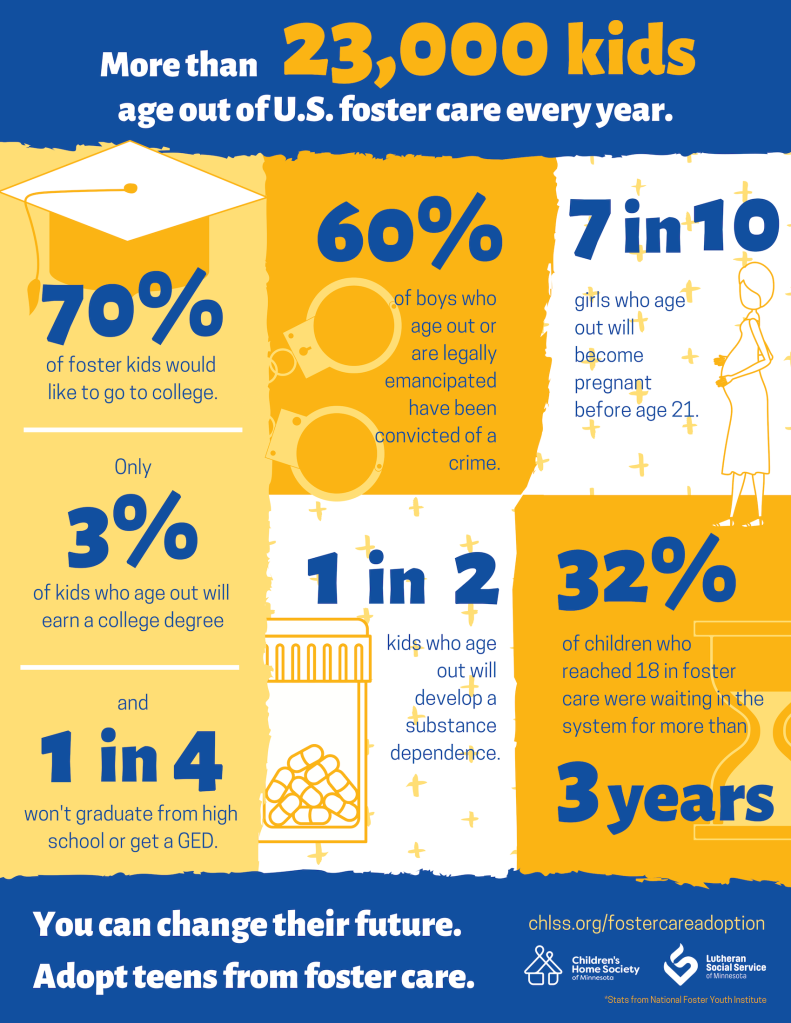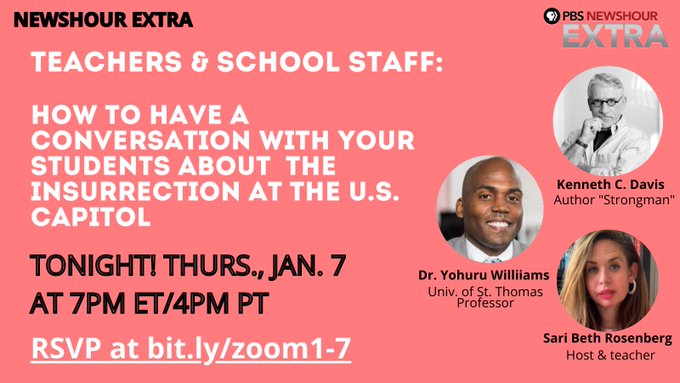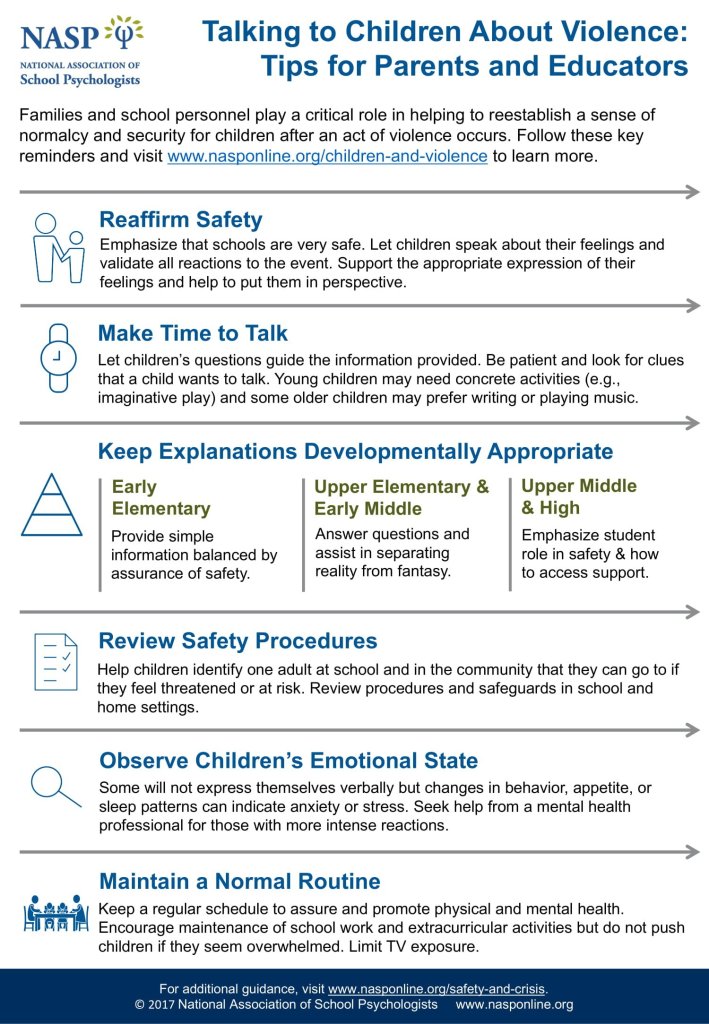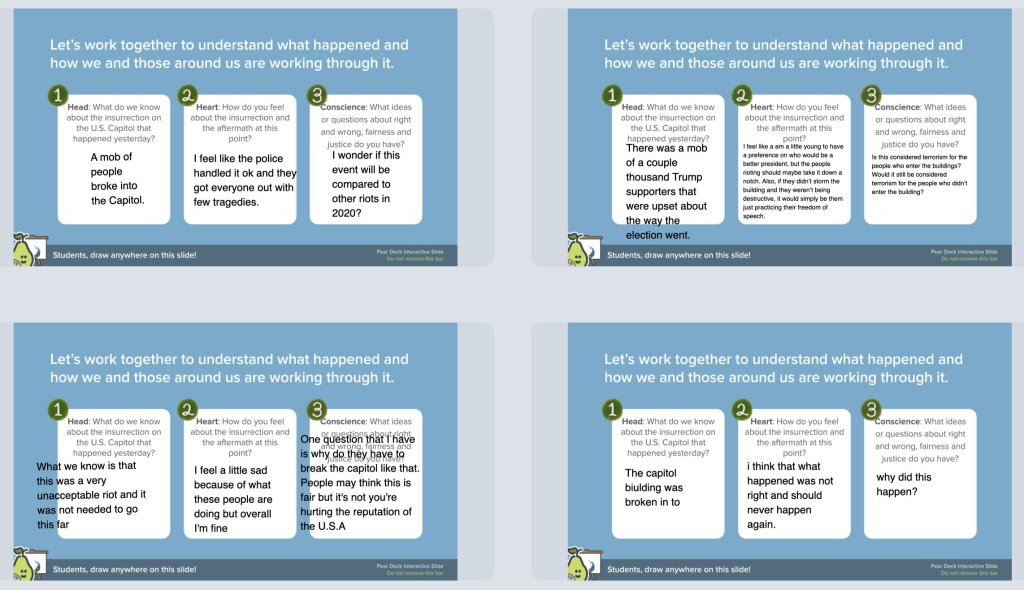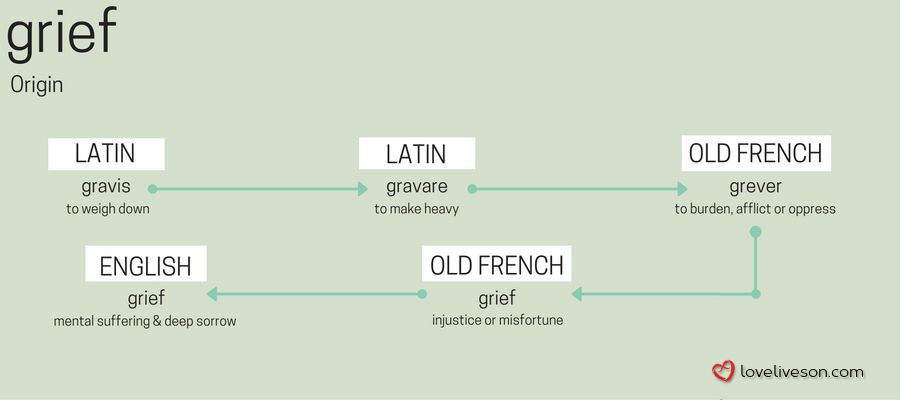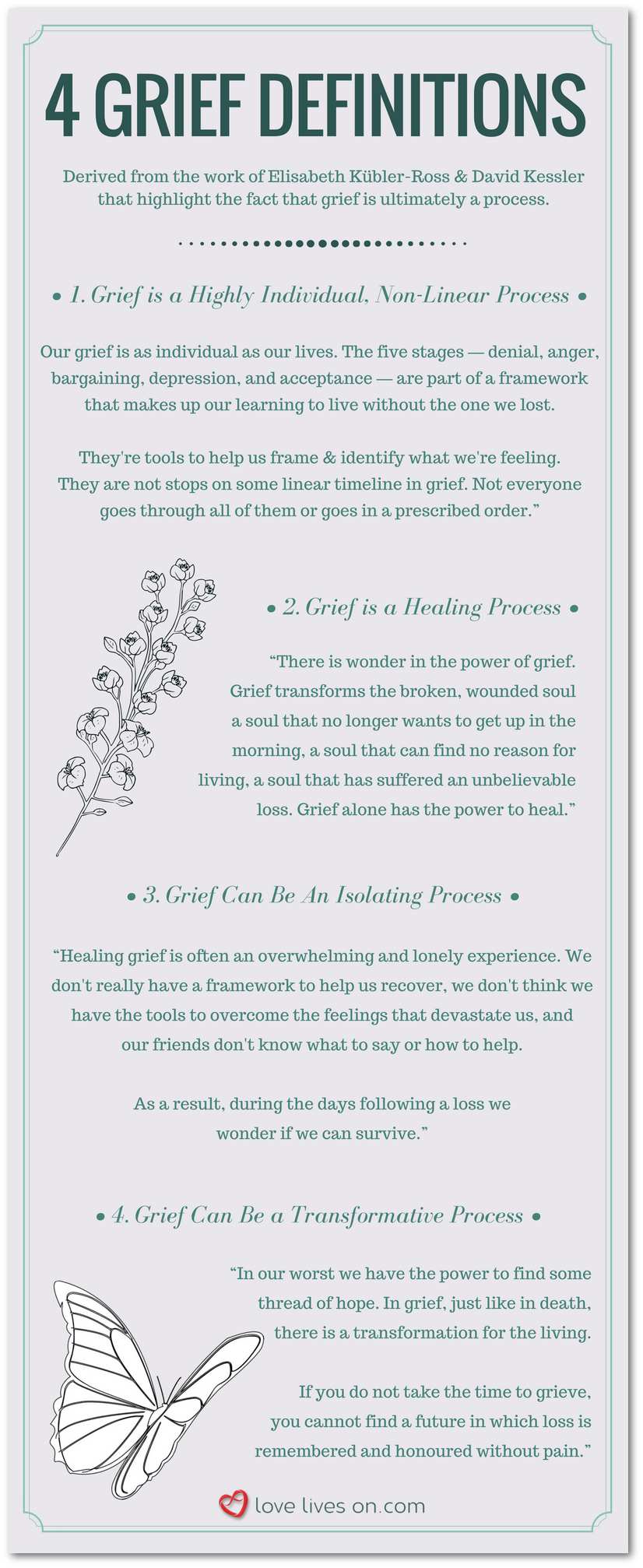
This tool kit is aimed to help educate and shift the lens of understanding systemic racism, as well as helping educators bring these anti-racist values into the classroom.
Say Their Names
Source
A toolkit to help foster productive conversations about race and civil disobedience
“In a racist society, it is not enough to not be non-racist, we must be anti-racist” – Angela Davis.
Say Their Names. George Floyd, Breonna Taylor, Ahmaud Arbery, and the countless others that came before.
If you are planning on talking to your students or children about the recent racial violence or civil disobedience, please first read “Don’t Say Nothing” by Jamilah Pitts. This piece illustrates how vital it is to engage young people in conversations about race and racism, and Ms. Pitts lays out the argument better than we ever could.
We hope that you take this time to read, reflect, and engage with both the young people and adults in your life in conversations around how we can confront racism every day. Safeguarding our young people means that we all must do the work to think and act equitably, show up for our Black students and colleagues, interrogate our own biases, and live an actively anti-racist life.
Below are suggestions and strategies for educators and parents on having conversations with young people in school and at home about race, racism, racial violence, understanding biases, and how to take action for racial justice.
At this time, we must focus on our shared humanity, and prioritize learning and talking about the root causes of the current protests and interracial activism. This is a time to come together, listen, learn, share in the grief and in hope, and act for a more just, equitable, and racially conscious world.
If you have suggestions for any lessons or activities, please share them with us here.
For more information on social-emotional support and guidance, contact the CPS Office of Social and Emotional Learning at OSEL@cps.edu or your Network SEL Specialist.
For more information on resources, protocols, and practices for civil discourse, youth voice, civic learning, and engagement, or K–12 social science, contact the CPS Department of Social Science and Civic Engagement at SSCE@cps.edu.
For information on the CPS Equity Framework and supporting tools and resources, please visit cps.edu/equity.
Included in this document:
Where to start? Guidance for CPS staff, families, and community members.
Note: This is a living document and will be updated on an ongoing basis.
Make a commitment to:
- Taking care of the mental and emotional health of our youth, our colleagues, and ourselves.
- Listen. Talking about race, racial violence, racism, Black Lives Matter, and elevating youth voices.
- Paying close attention to the news, media, and other information sources.
- Working to be actively anti-racist.
Take care of yourself. Take care of others.
Educate yourself.
- Educate yourself on the current moment and learn why people are organizing. Do research to better understand these issues, and do not rely on Black people to explain their feelings or their knowledge.
Engage our youth.
Resources for Realizing Our Commitment to Anti-racist Education:
- Consider the mental and emotional health of our youth, our colleagues, and ourselves.
- How can I support youth through this trauma?
- How can I use restorative practices to host healing spaces?
- Where can I find resources for myself and my colleagues?
- Talk about race, racial violence, racism, and Black Lives Matter.
- How do I start conversations about these topics and support youth remotely?
- How do I support Black youth without inducing further trauma?
- How do I talk about this with non-black youth?
- How do I talk about this with elementary-aged youth?
- How do I show up for my Black colleagues?
- Pay close attention to media and information.
- How is this story being told, and why is this important?
- How should I consume media at this moment? What questions should we be asking ourselves?
- How do we hold the media accountable? How are we accountable for the information we share?
- Be actively anti-racist.
- What does it mean to be anti-racist and why is it important?
- What does it mean to be an anti-racist educator?
- How do I take action? How do I get involved?
Review additional resources for teaching and talking about race, violence, and police violence.
Consider the mental and emotional health of our youth, our colleagues, and ourselves.
Violence has an impact on all of us, especially on our mental health. The protests that have gripped our city and nation reflect the hurt, anger, and pain of generations of racial trauma. Emotional responses may manifest in different ways, including anger, irritability, grief, and hopelessness. We should be aware of signs of trauma or distress not only for our youth but also for ourselves and our colleagues.
| How can I support young people through this trauma? |
| Title/Resource |
Description |
Link |
| When We Normalize Racism And Bigotry, We Do Violence To Our Mental Health |
This brief statement from Mental Health America calls attention to the impact of violence (including witnessing violent events in media reports) on our mental health, and especially the mental health of marginalized communities. The statement also contains links with additional information and resources. |
https://mhanational.org/when-we-normalize-racism-and-bigotry-we-do-violence-our-mental-health |
| Addressing Race and Trauma in the Classroom: a Resource for Educators |
This resource from the National Child Traumatic Stress Network (NCTSN) is designed to help educators understand the interplay of race and trauma in the classroom. The guide reviews historical trauma and racial trauma explains the impact of trauma on different age groups and offers supplemental resources. |
NCTSN: Addressing Race & Trauma in the Classroom |
| Managing Strong Emotional Reactions to Traumatic Events: Tips for Families and Teachers |
This resource from the National Association of School Psychologists provides a brief review of anger—a common reaction to trauma—and reminds adults of how the reactions of children and youth are influenced by adult responses. |
NASP: Managing Strong Emotional Reactions to Trauma |
| Responding to Student Mental Health Concerns During School Closure |
This district guide provides guidance on responding to student mental health concerns during remote learning, including a list of mental health resources. |
Responding to Student Mental Health Concerns |
| How White Parents Can Talk About Race |
NPR’s Michel Martin talks to Jennifer Harvey, author of Raising White Kids: Bringing Up Children in a Racially Unjust America, about how to talk with white kids about racially-charged events. |
https://www.npr.org/2020/05/31/866426170/raising-white-kids-author-on-how-white-parents-can-talk-about-race |
| Mindfulness Techniques for Students and Staff |
Calm Classroom is a simple and accessible way to integrate mindfulness into the classroom or home culture. Mindfulness is the ability to pay attention to our present moment. The daily practice of mindful breathing, stretching, focusing, and relaxation exercises cultivates a greater sense of self-awareness, mental focus, and emotional resilience within educational and personal spaces. |
https://mcusercontent.com/8b2c19337fef7c5607939c263/files/6ca21f04-5bd5-4841-be21-6bf20902f13f/Keep_Calm_Practice_Calm_Classroom.01.pdf |
| How can I use restorative practices to host healing spaces? |
| Title/Resource |
Description |
Link |
| How to Host a Virtual Circle |
Guidance on how to facilitate and adapt the model of an in-person circle for a virtual, online setting. Previous experience facilitating in-person circles is helpful but not necessary. |
https://healingcirclesglobal.org/how-to-host-a-virtual-circle/ |
| Circle Forward |
Sample scripts for hosting talking circles from the Circle Forward book specifically related to grief, loss, and trauma. |
Circle scripts |
| Where can I find resources for myself and my colleagues? |
| Title/Resource |
Description |
Link |
| Mental Health America: Supporting Others |
This article shares simple actions that anyone can take to help others who are going through difficult times. |
https://mhanational.org/supporting-others |
| Radical Self-Care in the Face of Mounting Racial Stress |
This article from Psychology Today provides steps for cultivating hope during times of distress and provides self-care strategies for adults. |
Psychology Today: Radical Self Care in the Face of Mounting Racial Stress |
| CPS Employee Assistance Program |
While it is great to check in with family, friends, and colleagues, sometimes it also helps to talk to someone who is trained to help you understand and work through feelings and emotions. Please remember that you are always welcome to reach out to the Employee Assistance Program. These services are confidential. |
Employee Assistance Program |
| The American Nightmare |
This thinkpiece provides insight to the mental, social, and historical impacts of systemic racism in America on Black people and how we have arrived at our current state in America. |
The American Nightmare |
| Your Black Colleagues May Look Like They’re Okay — Chances Are They’re Not |
This article highlights the stressors of working while Black during a pandemic in which race is both a factor and a trigger. This article supports empathetic thinking and social awareness. |
Your Black Colleagues May Look Like They’re Ok- Chances Are They’re Not |
| Detour Spotting for White Anti-racists |
How can white allies monitor their own patterns of behavior through an anti-racist lens in order to not perpetuate white supremacy? |
Detour Spotting for White Anti-racists |
| Avoiding Racial Equity Detours |
Describes four detours to racial equity work and how we can identify and avoid them. |
Avoiding Racial Equity Detours |
Talk about race, racial violence, racism, and Black Lives Matter.
“Our lives begin to end the day we become silent about things that matter.”- Dr. Martin Luther King Jr.
These resources explore our responsibility as educators, parents, and citizens to discuss race, racial violence, racism, and Black Lives Matter with youth, as well as resources to help us do this work.
Please note that schools and teachers should provide families and youth with an opt-out option. No matter how well-planned and expertly-facilitated these conversations are, they can be re-traumatizing to Black youth.
| How do I start the conversation and support youth remotely? |
| Title/Resource |
Description |
Link |
| Violent protests are not the story. Police violence is. |
This article provides information about the root causes of the protests and emphasizes why we need to focus on police brutality and racial discrimination. |
Violent protests are not the story. Police violence is |
| Facing History and Ourselves: Teaching In The Wake Of Violence |
This resource is a guide for teachers on navigating conversations with their students after news of a mass shooting, terrorist attack, police violence, and other violent events. |
Teaching In The Wake Of Violence |
| Teaching Tolerance: Black Lives Matter Still Matters |
This resource outlines why it is important to teach young people of all races about the Black Lives Matters movement, its origins, and its continued relevance. |
Black Lives Matter Still Matters |
| NYCSchools: Fostering Community During Remote Learning~Teacher Reflection Guide |
This guide provides reflection questions and ideas for teachers seeking to foster a welcoming and affirming remote learning environment. This guide can be used for individual reflection and as a jumping off point for group reflection. |
Fostering Community During Remote Learning~Teacher Reflection Guide |
| Anti-Defamation League: George Floyd, Racism and Law Enforcement “Table Talk: Family Conversations about Current Events” |
This reading provides suggestions for how educators, parents, families, and caregivers can discuss George Floyd, police violence, racism, and protests with youth. It also includes discussion questions and suggestions for how to take action. |
Table Talk: Family Conversations about Current Events |
| Talking About Race. The National Museum of African American History and Culture |
Talking about race, although hard, is necessary. These tools and guidance are designed to empower your journey and inspire conversation. Many of the tools for educators are PK-12. And there are great resources for individual work, no matter your role. |
https://nmaahc.si.edu/learn/talking-about-race |
| How do I support Black youth without inducing further trauma? |
| Title/Resource |
Description |
Link |
| Teaching Tolerance: Black Minds Matter |
This resource outlines the impact of racial disparities in mental health access and treatment and how schools and educators can play a major role in helping to mitigate those disparities. |
Black Minds Matter |
| Teaching Tolerance: Don’t Say Nothing. Silence Speaks Volumes. Our Students Are Listening. |
This resource outlines the importance and duty of educators to acknowledge and discuss race and racism with youth. |
Don’t Say Nothing. Silence Speaks Volumes. Our Students Are Listening. |
| Teaching Tolerance: Ending Curriculum Violence |
This article from Teaching Tolerance explores how despite the best intentions, teachers can create “curriculum violence” that can have detrimental effects on our youth. |
Ending Curriculum Violence |
| How do I talk about race, racial violence, racism, and Black Lives Matter with non-black youth? |
| Title/Resource |
Description |
Link |
| Anti-Defamation League: How Should I Talk About Race in my Mostly White Classroom? |
This resource provides guidance and considerations for how to engage in reflection and discussion on race and racism with white youth. |
How Should I Talk About Race in my Mostly White Classroom? |
| Safe Space Radio: Tips and Strategies “Talking to White Kids about Race and Racism” |
This resource provides tips for educators and parents on how to have a conversation on race and racism with white youth. |
Tips and Strategies: Talking to White Kids about Race and Racism |
| Letters For Black Lives: An Open Letter Project on Anti-Blackness |
This resource includes letters written by Asian American and Latinx American youth to their parents about the importance of centering Black lives in any discussion on race, discrimination, and injustice. It is an example for how non-black students can engage in learning and reflection on race, racism, and Black Lives Matter. |
Letters For Black Lives |
| New York Times: A Conversation on Race |
This resource includes a series of videos on different racial and ethnic groups describing their experiences with racism, including the following:
- A Conversation with my Black Son
- A Conversation About Growing Up Black
- A Conversation With Black Women on Race
- A Conversation with Latinos on Race
- A Conversation with Asian-Americans on Race
- A Conversation with Native Americans on Race
- A Conversation with White People on Race
- A Conversation with Police on Race
|
A Conversation on Race |
| How do I talk about this with elementary-aged youth? |
| Title/Resource |
Description |
Link |
| Teaching Tolerance: Y’all Still Don’t Hear Me Though |
This text for grades 6-8 features a 2015 essay by Lecia J. Brooks as she recounts her perspective as a protester who participated in the Los Angeles Race Riots that followed the trial of those who had committed police brutality against activist Rodney King. Her account details the pervasiveness of police brutality and why demonstrators protest against it. |
Y’all Still Don’t Hear Me Though |
| Children Community School: Social Justice Resources |
This site contains resources and considerations for how to discuss race and social justice topics including racism, police brutality, and protests with youth. |
Children Community School: Social Justice Resources |
| Edutopia: Teaching Young Children About Bias, Diversity, and Social Justice |
This resource contains five strategies for engaging youth in learning and discussion on bias, diversity, and social justice. |
Teaching Young Children About Bias, Diversity, and Social Justice |
| Oakland Library: Talking to Kids about Racism and Justice, a list for Parents, Educators, and Caregivers (Pre-K and up) |
This resource provides a list of educational resources to engage young people (Pre-K and up) in learning about racism and justice. |
Talking to Kids about Racism and Justice, A list for Parents, Educators, and Caregivers |
Pay close attention to media and information.
Media has power. What we see and hear shapes what we think, how we see ourselves, and how we engage with the world around us. Teaching young people at all ages critical media and information literacy skills is key for preparing youth for civic life.
| How is this story being told, and why is this important? |
| Title/Resource |
Description |
Link |
| Facing History and Ourselves: How Journalists Minimize Bias |
This lesson from Facing History and Ourselves asks youth to consider how biases and stereotypes influence the way we interpret the world around us and how both journalists and media consumers address issues of bias in themselves and others. |
How Journalists Minimize Bias |
| 5 Key Questions and Concepts that can Change the World |
It is important that we cultivate critical media dispositions and skills in our youth so that they consume information effectively. |
Edutopia: Social Media and 5 Key Concepts
Free lessons from the Center for Media Literacy using 5 Key Concepts/Questions that can be used with students every day. |
| Why Are All the Black Kids Sitting Together in the Cafeteria? (And Other Conversations about Race) |
The chapter from Beverly Daniel Tatum’s book “Defining Racism: Can We Talk?” explores the definition of racism, its cost, and impact. |
Why Are All the Black Kids Sitting Together in the Cafeteria? |
| Here’s What You Need to Know About Breonna Taylor’s Death |
This article provides a timeline of the events surrounding the killing of Breonna Taylor, whose death has received national attention and whose name has been included alongside Ahmaud Arbery and George Floyd in discussions about violence against Black Americans. |
Here’s What You Need to Know About Breonna Taylor’s Death |
| How should I consume media at this moment? What questions should we be asking ourselves? |
| Title/Resource |
Description |
Link |
| Teaching Tolerance: Living with the Bear |
This article discusses how constant exposure to violence via social media is harming our youth, and how we can give them the support they need. |
Living with the Bear |
| Teaching Tolerance: Teaching Students about Confirmation Bias |
This article focuses on concerns about the impact of fake news by helping youth know and understand confirmation bias (our tendency to more readily believe information that supports—or confirms—our existing worldviews and to exclude information that might contradict previously held assumptions). |
Teaching Students about Confirmation Bias |
| Teaching Tolerance: A Classroom Discussion About the Media, Trust, and Knowledge |
This article encourages students to think through problems in the contemporary media landscape to help them become more active, open-minded knowledge-seekers. |
A Classroom Discussion About the Media, Trust, and Knowledge |
| How do we hold the media accountable? How are we accountable for the information we share? |
| Title/Resource |
Description |
Link |
| Vox: Media Coverage of Protests Sure Looks Different when Demonstrators are White |
This article examines how the media covers protests when the demonstrators are white. |
Vox: Media coverage of protests sure looks different when demonstrators are white |
| When They See Us: Improving the Media’s Coverage of Black Men and Boys |
This article shows how media coverage shapes the ability of individuals and communities to receive fair and equal justice and how persistent trends of distorted media depictions of Black men and boys contribute to negative stereotypes, inequitable treatment, and unequal opportunities. |
When They See Us: Improving the Media’s Coverage of Black Men and Boys |
Be actively anti-racist.
“In a racist society, it is not enough to not be non-racist, we must be anti-racist” – Angela Davis.
These resources explore what it means to be anti-racist and its importance to our role as educators, parents, and citizens. We must first listen, then learn, discuss, and act.
| What does it mean to be anti-racist and why is it important? |
| Title/Resource |
Description |
Link |
| National Museum of African American History and Culture: Being Anti-racist |
This hand-out explores and offers guidance on the the following topics:
- What does it mean to be anti-racist?
- Becoming an anti-racist as a white person.
- Becoming an anti-racist as a person of color.
|
Racial Healing Handbook: Practical Activities to Help You Challenge Privilege, Confront Systemic Racism, and Engage in Collective Healing |
| Teaching Tolerance: White Anti-Racism: Living the Legacy |
A conversation about power, privilege, identity, and what it means to be anti-racist with community activists incuding:
- Diane Flinn, a white woman and managing partner of Diversity Matters.
- Georgette Norman, an African American woman and director of the Rosa Parks Library and Museum.
- Sejal Patel, a South Asian American woman and community organizer in South Asian immigrant communities.
- Yvette Robles, a Chicana and Community Relations Manager in Los Angeles.
|
White Anti-Racism: Living the Legacy |
| How can I be an anti-racist educator? |
| Title/Resource |
Description |
Link |
| Edweek: The Urgent Need for Anti-Racist Education |
As educators, we don’t just teach content; we teach life lessons. Here are changes we can make to ensure we are breaking down racist beliefs and systems of white supremacy in our own classrooms. |
The Urgent Need for Anti-Racist Education |
| ASCD: How to be an Anti-Racist Educator |
Included in this article are five actions we can take to be anti-racist educators for our youth, including “Engage in Vigilant Self-Awareness,” “Study and Teach Representative History,” and “Talk about Race with Youth.” |
How to be an Anti-Racist Educator |
| Edutopia: Creating an Anti-Racist Classroom |
This resource helps us to reflect on our own biases and about our own practices in the classroom as we engage in anti-racist work. |
Creating an Anti-Racist Classroom |
| Chicago Regional Organizing for Anti-Racism |
Chicago ROAR is a regional program of Crossroads Antiracism Organizing and Training. The purpose of Chicago ROAR is to dismantle systemic racism and build anti-racist multicultural diversity within institutions and communities by training institutional transformation teams
They are offering free virtual workshops. |
Chicago Regional Organizing for Anti Racism |
Additional resources for teaching and talking about race, violence, and police violence.
|
| Title/Resource |
Description |
Link |
| NY Times: First Encounters with Race and Racism: Teaching Ideas for Classroom Conversations |
This is a lesson plan from the New York Times on how to engage youth in conversations about race, including discussion questions, videos on race and implicit bias, and voices from youth about their experiences with racism. |
First Encounters with Race and Racism: Teaching Ideas for Classroom Conversations |


